Why Are India's Manufacturers Replacing Manual Handling with Pallet Inverters?
Are you constantly battling with the hidden costs and dangers of manual handling in your factory? You see your teams struggling to lift, turn, or transfer heavy loads from one pallet to another. This process is slow, it's a major safety risk, and any small mistake can lead to damaged goods and costly production delays. I've walked through countless factories and seen this same problem everywhere. It’s a persistent issue that silently eats away at your profit margins and operational efficiency, making it difficult to keep up with the demands of a competitive market.
Indian manufacturers are rapidly replacing manual handling with pallet inverters for a simple reason: it provides an immediate and substantial return on investment. These machines drastically cut labor costs, enhance worker safety by eliminating dangerous manual lifting, minimize product damage, and accelerate the entire logistics workflow. This shift isn't just a minor upgrade; it's a fundamental change that boosts overall plant productivity and profitability, allowing them to compete more effectively on a global scale.
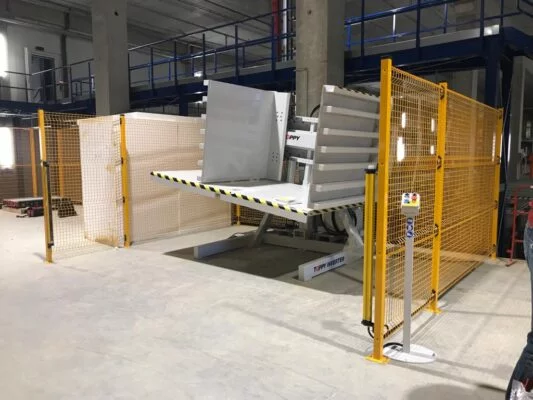
This move is more than just a trend. It's a strategic decision. As an engineer who has spent his entire career in the packing machine industry, I've seen firsthand how a single piece of smart automation can transform an entire operation. The benefits go far beyond just saving a few minutes here and there. It’s about building a more resilient, efficient, and safer production environment. Let’s dive deeper into the specific reasons why this technology is becoming essential for manufacturers in India and around the world.
How Do Pallet Inverters Directly Cut Operational Costs in Indian Factories?
Do you find yourself analyzing spreadsheets where labor costs and material waste seem to creep up every quarter? Manual pallet handling is often a major, yet overlooked, source of these expenses. You are paying for a team of workers to perform a repetitive, physically demanding task. And you're also paying for the products they accidentally drop or damage in the process. These costs add up, directly impacting your bottom line and making it harder to manage financial pressures like fluctuating energy prices.
Pallet inverters directly attack these costs on multiple fronts. They significantly reduce the manpower required for load transfer, cut down on expensive product damage, and enable smart pallet management that can save thousands. By automating the process of turning or swapping palletized loads, a single operator can do the work of an entire team, faster and with virtually no risk to the product.
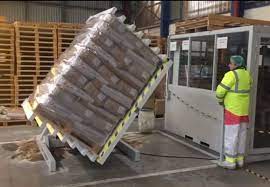
A Deeper Look at Cost Reduction
When I work with clients, the first thing we often do is a simple cost analysis. The results are always eye-opening. The discussion moves from "this is a machine we might need" to "how soon can we get this installed?" Let's break down the savings into three key areas. This is the kind of practical analysis that business owners like you, Javier, appreciate because it’s based on real-world numbers, not just vague promises.
Direct Labor Savings
The most obvious saving is in labor. A manual pallet swap often requires two to four workers. They have to de-stack the entire pallet, box by box, onto a new one. This is slow, inefficient work. A pallet inverter allows a single forklift operator to perform the same task in under two minutes. The math is straightforward. If you are running multiple shifts and handling dozens of pallets a day, the saved man-hours are enormous. This frees up your valuable team members to focus on more skilled, value-added tasks instead of pure manual labor. The machine pays for itself in labor savings alone, often in less than a year.
Preventing Product Damage
Every time a product is handled manually, there's a risk of damage. Boxes get dropped, bags tear, and containers get crushed. For high-value goods, or in industries like food and pharmaceuticals where package integrity is critical, a single incident can wipe out the profit from an entire shipment. A pallet inverter secures the load with a consistent, controlled pressure and rotates it smoothly. The risk of human error is completely removed from the equation. I remember a client in the beverage industry who was losing nearly 2% of their product to damage during transfers between internal and shipping pallets. After installing an inverter, that number dropped to virtually zero. This saving went directly to their profit margin.
Strategic Pallet Management
This is a hidden benefit that many people miss, but it has a huge financial impact. Many companies use high-quality, expensive pallets for internal use within the factory because they are durable. However, they don't want to send these expensive pallets out with shipments. They prefer to use cheaper, one-way shipping pallets. A pallet inverter makes it incredibly easy to switch from your expensive in-house pallet to a low-cost shipping pallet right before loading the truck. You get to keep your valuable assets, reducing pallet replacement costs and losses.
| Cost Factor | Manual Handling (Per Pallet) | With Pallet Inverter (Per Pallet) | Annual Savings Example (50 pallets/day) |
|---|---|---|---|
| Labor | 3 workers, 15 minutes (~$15) | 1 operator, 2 minutes (~$1) | ~$175,000 |
| Product Damage | ~1-2% of load value (~$20) | ~0% (~$0) | ~$250,000 |
| Pallet Cost | Risk of shipping $40 pallet | Switch to $10 pallet | ~$375,000 |
Note: Figures are illustrative examples.
The table makes it clear. A pallet inverter isn’t an expense; it’s a cost-cutting machine.
Can Automating Pallet Handling Really Boost Production Uptime to 95%?
You have a clear goal: achieve 95% equipment uptime. You know that every minute a production line stands still is lost revenue. Often, we focus on the big machines, the main production line, but ignore the small bottlenecks in logistics that cause these stops. Manual pallet handling is a classic example. It's an unpredictable process that can bring everything to a halt, whether it's waiting for a team to assemble or cleaning up a spill from a dropped load.
Yes, absolutely. Automating this single step can have a massive positive impact on your overall uptime. A pallet inverter transforms a slow, variable, and unreliable manual task into a fast, consistent, and predictable automated one. It removes a key bottleneck that disrupts the flow of materials from production to shipping. By making the pallet exchange process seamless and dependable, you smooth out your entire operation and take a significant step toward that 95% uptime target.
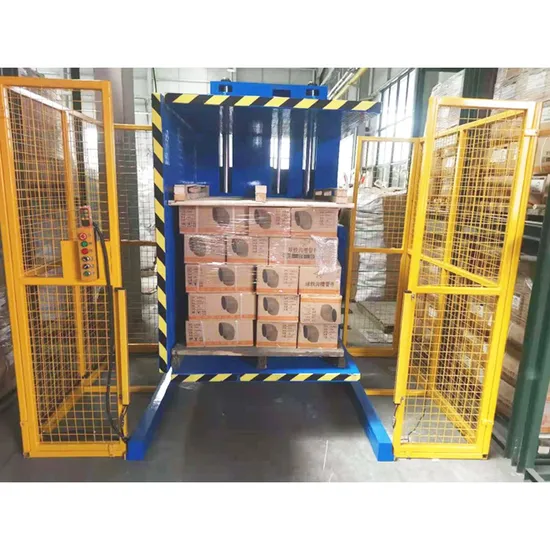
The Mechanics of Gaining Uptime
As an engineer, I see a factory as a complete system. Like any system, it is only as strong as its weakest link. For many of my clients, that weak link was the point where goods needed to be transferred or prepared for shipping. Addressing this doesn't just make one task faster; it improves the rhythm of the entire plant.
Cycle Time: Consistency is Key
Think about your production line. It's designed to operate at a certain speed, producing a set number of units per hour. The downstream processes must be able to keep up. Manual pallet handling is inherently inconsistent. The time it takes can vary from 10 minutes to 30 minutes, depending on the load, the number of workers available, and their energy level. This variability wreaks havoc on scheduling. A pallet inverter, on the other hand, has a fixed cycle time, usually around 60 to 90 seconds. Every single time. This predictability allows you to plan your production flow with much greater accuracy. You eliminate the "wait time" that kills productivity. The packaging line no longer has to pause while waiting for a pallet to be manually re-stacked.
Eliminating Unplanned Downtime
Unplanned downtime is the enemy of efficiency. A key cause of this is worker injury from manual handling. If a worker strains their back, they are out, and you have to scramble to find a replacement. The line stops. By automating the task, you eliminate the physical strain and the associated risk of injury. This is a direct contribution to maintaining a stable, running operation. Furthermore, manual errors can lead to spills or damaged loads that require significant time to clean up and sort out, causing further unplanned stops. An automated, secure process prevents these incidents from happening in the first place.
Seamless Integration into a Larger System
A pallet inverter is not an island. Its true power is unlocked when it's seen as a component in a larger automated system, which aligns with your goal of digital transformation. It can be integrated directly with other equipment. For example, a finished pallet can come off the production line via a conveyor, feed directly into the inverter to be switched to a shipping pallet, and then be picked up by an Automated Guided Vehicle (AGV) for transport to the warehouse. This creates a fully autonomous "end-of-line" solution. I have personally designed systems like this for clients. We connect the inverter's controls to the main factory MES (Manufacturing Execution System), allowing for full visualization and control of the material flow. This is how you move from just making products to running a truly smart factory.
What are the Hidden Safety and Compliance Benefits of Ditching Manual Pallet Handling?
As a CEO and owner, you carry the ultimate responsibility for the safety of your people. A serious workplace injury is more than a financial liability; it affects morale, damages your company's reputation, and is a heavy burden to bear. Manual handling of heavy, awkward loads is one of the biggest causes of debilitating injuries, especially to the back and shoulders. These incidents are a constant worry for any responsible leader.
The most important hidden benefit is creating a fundamentally safer workplace. By mechanizing the task of lifting and turning thousand-pound loads, you eliminate the primary cause of musculoskeletal injuries. This directly reduces workers' compensation claims and insurance premiums. Beyond that, it helps your company easily meet increasingly strict government safety regulations. It also sends a powerful message to your employees: you are investing in their well-being. This fosters a positive safety culture, which is invaluable.
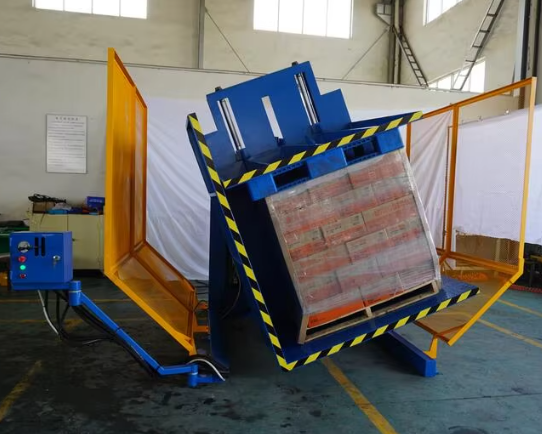
Building a Culture of Safety, Not Just Compliance
Over my career, I've learned that the safest factories are also the most productive. The two are directly linked. When you engineer hazards out of a process, you create a more stable, predictable, and efficient environment. This is a topic that resonates deeply with forward-thinking leaders like Javier, who understand that investment in safety is an investment in the business itself.
Ergonomics and Preventing Career-Ending Injuries
Musculoskeletal disorders (MSDs), like back sprains, hernias, and chronic joint pain, are the most common and costly type of workplace injury. They are caused by repetitive strain, heavy lifting, and awkward postures—the exact motions required for manual pallet handling. These are not minor incidents; they can lead to long-term disability and end a worker's career. A pallet inverter is an example of an "engineering control." In the hierarchy of safety, this is the most effective method because it completely removes the hazard. You are not just giving workers training on how to lift properly; you are removing the need for them to lift at all.
Meeting and Exceeding Regulatory Standards
Governments across the world, from India to Mexico, are strengthening their Occupational Health and Safety (OHS) laws. Regulators are increasingly focused on ergonomics and preventing MSDs. Having a pallet inverter is a clear, demonstrable sign that you are taking proactive measures to protect your workforce. During a safety audit, being able to point to this kind of equipment shows a serious commitment to compliance. This can lead to lower insurance premiums and protect the company from potential fines and legal action. It moves you from a reactive position (dealing with accidents after they happen) to a proactive one (preventing them from ever occurring).
The Impact on Employee Morale and Retention
Your employees are your greatest asset. When they see the company investing in modern, safe equipment, it tells them that their health and well-being are valued. This builds loyalty and trust. A safe work environment is a major factor in employee satisfaction and retention. In a tight labor market, being known as a safe employer gives you a competitive advantage in attracting and keeping the best talent. I have seen the mood on a factory floor change overnight after installing new safety-focused automation. The workers are relieved, they feel respected, and their focus shifts from protecting their backs to improving product quality. This "soft" benefit has a very real and positive impact on your operations.
My Perspective: Is a Pallet Inverter Just a Machine, or a Strategic Asset?
I've talked with hundreds of factory owners over the years. Some see new equipment purely as a capital expense, a line item on a budget that needs to be minimized. They focus only on the initial purchase price. This perspective, frankly, is limiting. It causes them to miss the bigger picture and, as a result, they miss out on huge opportunities for growth and improvement. It's a trap that keeps businesses from reaching their full potential.
Based on my entire journey—from a young engineer on the factory floor to building my own successful packing machine business—I can tell you a pallet inverter is not just another machine. It is a strategic asset. When you look at it through the right lens, it becomes a powerful tool that drives improvements across your entire operation. It's a catalyst for better efficiency, higher safety standards, and greater cost control. It is a cornerstone of a modern, competitive manufacturing business.
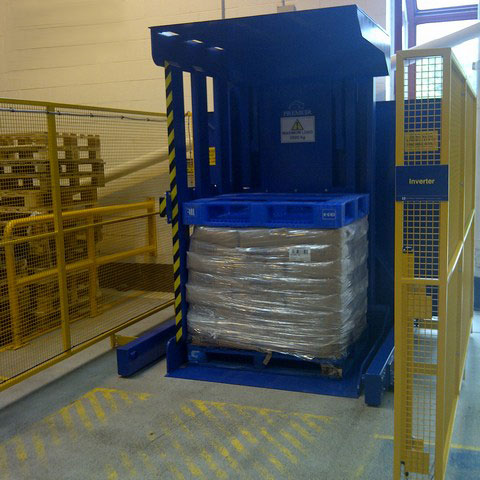
From My Factory Floor to Yours
Javier, your journey from a hands-on role to owning a major steel plant gives you a unique perspective. You've seen the challenges at every level. My path has been similar in the packing machinery world. I started as an employee, learning every nut and bolt. When I founded SHJLPACK, I faced the same pressures you do: managing cash flow, justifying investments, and pushing for greater efficiency to stay competitive.
What I learned is that the most impactful investments were not always the cheapest. They were the ones that solved a fundamental problem in our process. The pallet inverter is a perfect example of this. It doesn't just do one thing; it has a ripple effect.
This is what we at SHJLPACK mean by our slogan, "TOTAL SOLUTION FOR WRAPPING MACHINE." A machine in isolation has limited value. Its true power comes from how it fits into your total process flow. A strategic partner—which is what we strive to be—doesn't just sell you a machine. We help you analyze your entire workflow, from the moment a product comes off the line to the moment it's loaded onto a truck. We help you identify the real bottlenecks and find the right solution, whether it's a pallet inverter, a stretch wrapper, or a fully integrated system. We help you see the ROI not just in labor saved, but in increased throughput, reduced product damage, improved safety, and the flexibility to meet your customers' demands.
This philosophy is what allowed me to grow my business and achieve my own financial goals. More importantly, it's what has allowed me to help my clients grow theirs. By sharing my knowledge and experience, I hope to help other passionate leaders like you make the strategic investments that will secure your company's success for years to come.
Conclusion
Indian manufacturers are adopting pallet inverters not for one single reason, but for a strategic advantage. It is a proven investment in operational safety, cost control, and future-proof efficiency.




